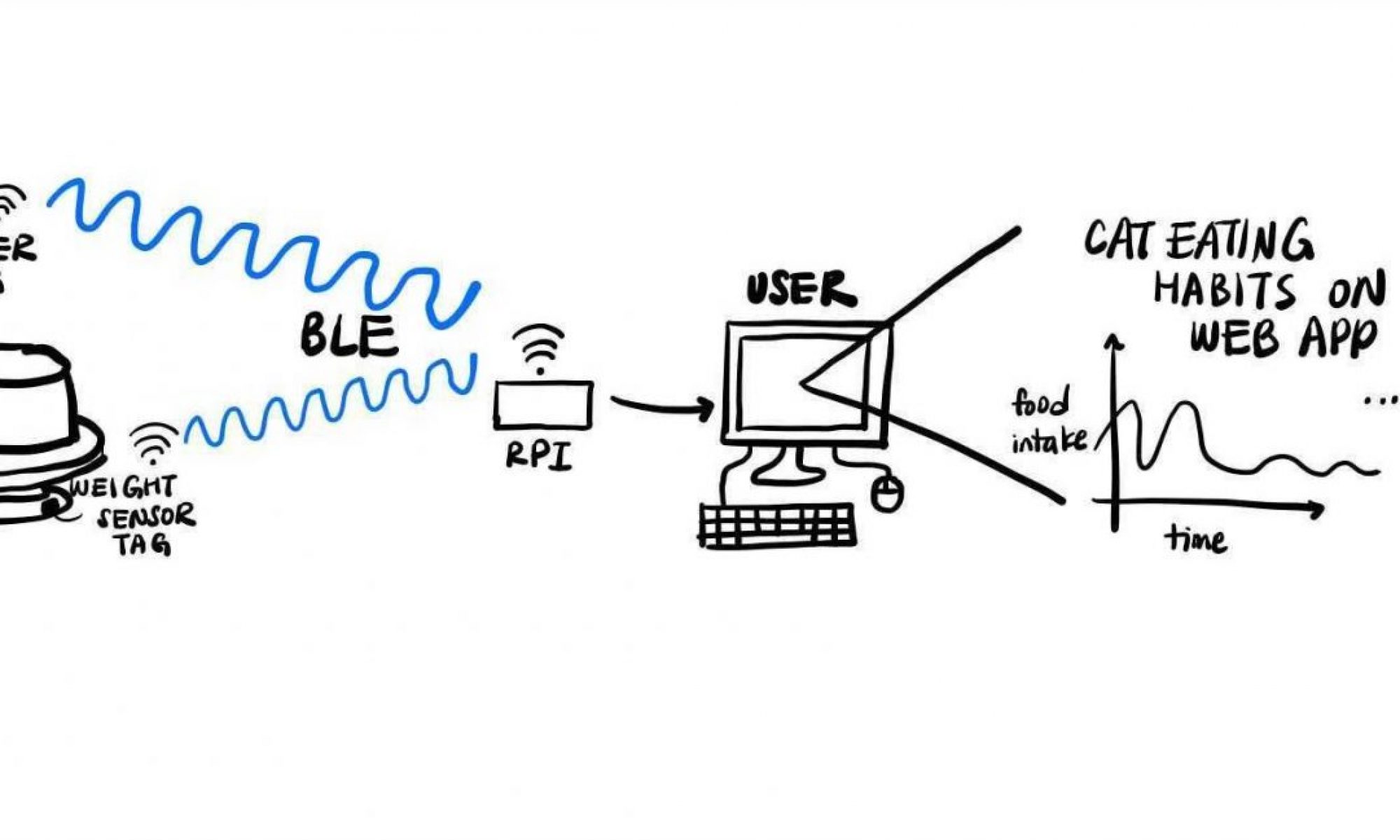Hello World! This semester will see the development of a novel IoT cat tracking system, and we’re so excited for the road ahead!
The past few weeks saw a whirlwind of activity as the team weighed several solution approaches for how to best tackle the problem of sensing cat illness. After meeting with Professor Mukherjee and our TA, Edward, we realized that our decision to make the project consist of several distributed components needed more concrete reasoning – why would a system of separate sensor tags be better than a large, single device. After re-evaluating the problem area of analyzing cat eating habits, we found that a distributed system allowed for more modularity and customization around users’ unique circumstances. For example, users with only one pet would have no need for tracking unique cats and thus could not justify the additional cost of a built-in RFID sensor subsystem. A modular system architecture would allow users to simply add or remove RFID sensor tags based on their need to distinguish between multiple pets.
The team also researched various wireless communication protocols and conducted a trade study between using Bluetooth Low Energy (BLE) versus WiFi for Tag←→Hub data transmissions. While the longer range of the WiFi standard made it a tempting pick, we ultimately settled on BLE because of its highly superior power consumption and lower development complexity. Lucas began searching for specific BLE modules and settled on a shortlist, to be written out as a trade study by next week.
Writing the proposal slidedeck was the bulk of this week’s work. With Proposal Presentations coming up this week, MeeDm has been practising extensively to prepare. We’re so excited to present this project and hear feedback!
